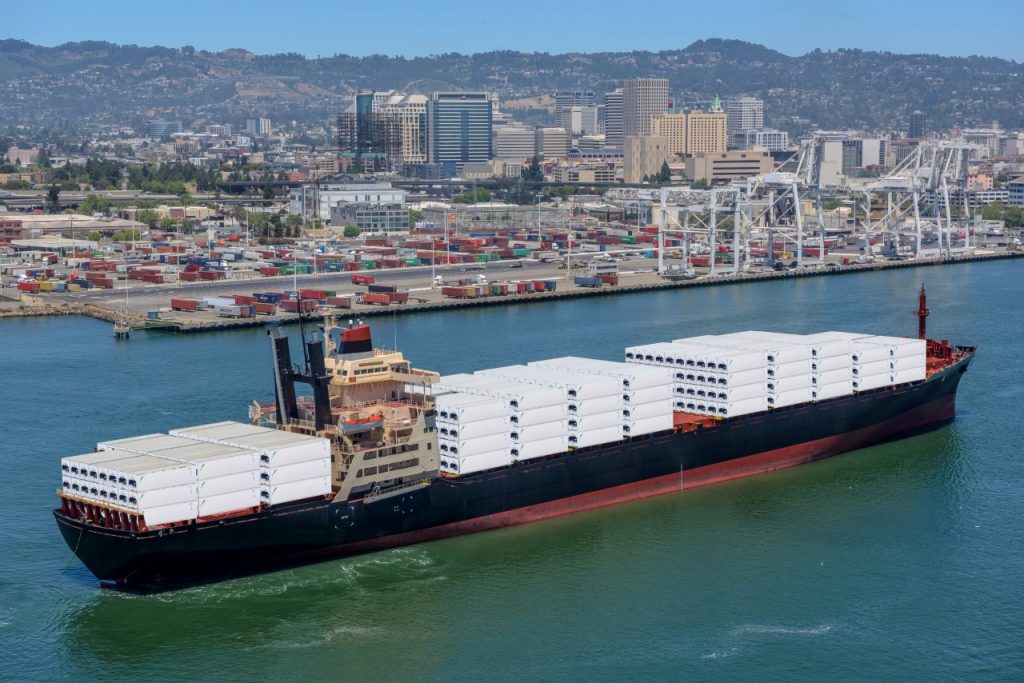Stakeholders throughout the supply chain understand 2023 will not be like any other year, especially for the cold chain.
The reefer market is growing and providing reliability and predictability, making it more resilient in the face of supply chain disruption.
However, a fluid cold chain is critical to feeding the world’s population and requires investment and innovation. Ocean carriers need a strategic roadmap to address economic and geopolitical challenges, food supply shortages, food waste, refrigerated equipment capacity, and sustainability goals.
Greg Tuthill (pictured below), Chief Commercial Officer (CCO) of SeaCube Container Leasing explains the top four cold chain growth drivers.
1. Food Waste Mitigation: Food waste has been a persistent issue, and it will prove to be an even bigger problem in 2023 as experts predict food supply shortages will continue to get worse throughout the year. While today’s refrigerated equipment provides superior cold storage, arming reefer fleets with telematics technology allows for greater collaboration, increased transparency, and real-time data, which provides accurate information on the exact location of the container, which is necessary for proper planning.
2. Food Outsourcing: The transport journey for temperature-controlled food can be long and there is the risk of contamination and damage every step of the way. This elevates the need for state-of-the-art refrigerated equipment that includes telematics to ensure the cargo is handled properly throughout the entire journey. The reefer market is expected to grow on average five percent year over year through 2025 while breakbulk containers demand will drop 15 percent. The movement of fruits and vegetables will be the key driver in the temperature-controlled cargo market as consumers expect “off season” perishables to be readily available all year long.
3. Decarbonization: In 2018, the government-imposed regulations compelled the shipping industry to reduce carbon emissions by half by mid-century. With aggressive sustainability goals, the shipping industry is looking to make changes throughout the supply chain, and there are significant opportunities within the reefer sector.
Carbon Dioxide (CO2) as a refrigerant is used more because of its zero depleting characteristics and its global warming potential of one.CO2 as a natural refrigerant is one of the most environmentally sustainable alternatives for refrigerated marine transport. Other considerations for reducing greenhouse gas emissions include variable speed drives for compressors and two-speed evaporator fans, which offer energy efficiency and can elevate even the most optimal operation linked to an energy-efficient fleet. Acting now to limit the damage from climate change is often smarter—and costs less in the long run—than acting later.
4. Technology and Connecting End-to-End: Technological advancements, digitalization and the digital transformation of businesses will be a growth driver not just for the reefer market, but for the entire supply chain. Smart” containers are equipped with telematics that provide real-time tracking and monitoring.
The use of telematics in the maritime shipping industry is expected to explode in the coming years. According to data from Allied Market Research, telematics investment is expected to grow in maritime shipping by a CAGR of 21.3% by 2026. This stat is a strong statement about the supply chain industry’s commitment to investing in technology to address critical cold chain issues.
Reefer Challenges and Opportunities
In closing, the reefer market is the most resilient sector of the shipping industry, but it has a responsibility to take steps to mitigate food waste. The industry is looking for a silver bullet to meet sustainability goals, but the current carbon emission-reducing solutions connected to reefers present an opportunity to make a significant impact. The potential solutions on the horizon are exciting.
Picture: Gregory Tuthill.




